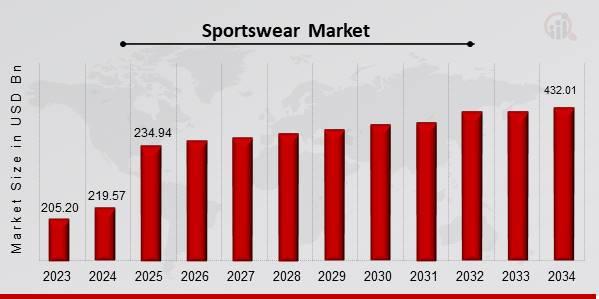Rising Prevalence of Parkinson’s Disease Driving Growth in the Global Parkinson’s Disease Treatment Market
Rising Prevalence of Parkinson’s Disease Driving Growth in the Global Parkinson’s Disease Treatment Market
Data Bridge Market Research analyses that the Parkinson’s disease treatment market which was USD 4,999.18 million in 2022, would rocket up to USD 10,034.52 million by 2030, and is expected to undergo a CAGR of 9.10% during the forecast period.

Parkinson’s disease (PD) is a progressive neurological disorder that primarily affects movement and motor skills. It is caused by the degeneration of dopamine-producing neurons in the brain, particularly in a region known as the substantia nigra. As dopamine levels decline, individuals experience symptoms such as tremors, stiffness, slowness of movement, and balance problems. With the rising global prevalence of Parkinson’s disease, there has been a significant increase in demand for effective treatments, creating robust growth opportunities in the global Parkinson’s disease treatment market.
The market for Parkinson’s disease treatment has witnessed rapid development in recent years, driven by advancements in medical research, an increasing aging population, and growing awareness about the condition. As more people are being diagnosed earlier due to better screening and diagnostic techniques, healthcare providers and pharmaceutical companies are focused on developing therapies that not only alleviate symptoms but also slow the progression of the disease.
Market Overview
The global Parkinson’s disease treatment market is expanding steadily due to a rise in patient numbers and a strong pipeline of new drugs under development. Parkinson’s disease is one of the most common neurodegenerative disorders after Alzheimer’s disease, affecting millions of individuals worldwide. According to estimates, the number of Parkinson’s patients is expected to double over the next two decades as the population ages.
Currently, treatment primarily focuses on managing symptoms rather than curing the disease. The most widely used treatment is levodopa, often combined with carbidopa, which helps replenish dopamine levels in the brain. Other drug classes include dopamine agonists, MAO-B inhibitors, COMT inhibitors, and anticholinergics. In addition to medications, advanced treatments like deep brain stimulation (DBS) and innovative therapies such as gene and stem cell therapies are gaining attention in the market.
Key Drivers of Market Growth
Several factors are contributing to the growth of the Parkinson’s disease treatment market globally:
1. Increasing Prevalence of Parkinson’s Disease
The global incidence of Parkinson’s disease is on the rise, primarily due to a growing elderly population. Since Parkinson’s disease typically affects individuals over the age of 60, the increasing life expectancy worldwide has directly led to a higher number of patients requiring treatment.
2. Advancements in Treatment Options
Technological advancements and innovations in drug formulations are playing a crucial role in market growth. Extended-release medications, novel drug delivery systems, and minimally invasive surgical techniques like DBS are improving patient outcomes and quality of life.
3. Strong Research and Development Pipeline
Pharmaceutical companies are investing heavily in research and development (R&D) to discover disease-modifying treatments. The focus is shifting from merely addressing symptoms to finding therapies that can slow or halt disease progression. This shift is expected to open new avenues for revenue generation in the coming years.
4. Growing Awareness and Early Diagnosis
Public health campaigns and increased awareness about neurological disorders have led to earlier diagnosis and timely treatment. Early intervention improves patient prognosis and drives demand for various medications and therapies.
Challenges Facing the Market
While the Parkinson’s disease treatment market holds immense potential, it also faces certain challenges that must be addressed to ensure sustainable growth.
1. High Treatment Costs
Advanced therapies, including deep brain stimulation and certain newer medications, can be expensive, making them inaccessible to patients in low- and middle-income countries. This cost factor remains a barrier to widespread adoption.
2. Lack of a Curative Therapy
Despite significant progress in treatment options, there is still no cure for Parkinson’s disease. Current therapies only manage symptoms, and the lack of a permanent solution creates a gap in the market that researchers are striving to fill.
3. Limited Access to Healthcare in Developing Regions
In many developing nations, limited healthcare infrastructure and lack of trained neurologists hinder the early detection and treatment of Parkinson’s disease. This disparity in access restricts the overall growth of the global market.
Market Segmentation
The global Parkinson’s disease treatment market can be segmented based on drug class, treatment type, distribution channel, and region.
By Drug Class
Levodopa/Carbidopa
Dopamine Agonists
MAO-B Inhibitors
COMT Inhibitors
Anticholinergics
Others
By Treatment Type
Medication
Surgical Treatment (Deep Brain Stimulation)
Non-Pharmacological Therapies (Physical Therapy, Speech Therapy)
By Distribution Channel
Hospital Pharmacies
Retail Pharmacies
Online Pharmacies
By Region
North America
Europe
Asia-Pacific
Latin America
Middle East & Africa
Among these, North America currently dominates the market due to its well-established healthcare system, high awareness levels, and strong presence of pharmaceutical companies. However, Asia-Pacific is expected to witness the fastest growth during the forecast period due to increasing healthcare investments, a rapidly aging population, and expanding access to medical facilities.
Technological Innovations Shaping the Future
The future of the Parkinson’s disease treatment market looks promising, with several groundbreaking innovations on the horizon.
Gene Therapy: Researchers are exploring gene therapy approaches to target the underlying causes of the disease rather than just its symptoms.
Stem Cell Therapy: Stem cell research holds potential for regenerating damaged neurons and restoring normal dopamine production.
Digital Health Solutions: Wearable devices and mobile health apps are helping patients monitor symptoms and medication schedules, leading to better disease management.
Personalized Medicine: Advances in genomics are paving the way for customized treatment plans tailored to individual patients, increasing efficacy and minimizing side effects.
These innovations are likely to revolutionize how Parkinson’s disease is treated in the coming years.
Competitive Landscape
The market is highly competitive, with several key players focusing on strategic collaborations, mergers, acquisitions, and new product launches to strengthen their position. Companies are also investing in R&D to develop more effective and safer drugs. The competitive environment encourages continuous innovation, ultimately benefiting patients through improved treatment options.
Conclusion
The global Parkinson’s disease treatment market is poised for substantial growth in the coming years, driven by rising prevalence, advancements in therapy, and increasing awareness about early diagnosis. While challenges such as high treatment costs and lack of curative solutions persist, ongoing research and technological innovations are expected to reshape the treatment landscape.
Browse More Reports :
Europe Health and Wellness Food Market
Global Luxury Watch Market
Global Microalgae Market
Global Ready to Drink (RTD) Alcoholic Beverages Market
Global Rumen Bypass Fat Market
Middle East and Africa Aesthetic Dermatology Market
Europe Cosmetics Market
Global Furniture Fittings Market
Global Metal Roofing Market
West Africa Baby Food Market
Global Adult Diapers Market
Global Aesthetic Dermatology Market
Global Caviar Market
Global Coffee Machines Market
Global Dairy Market






